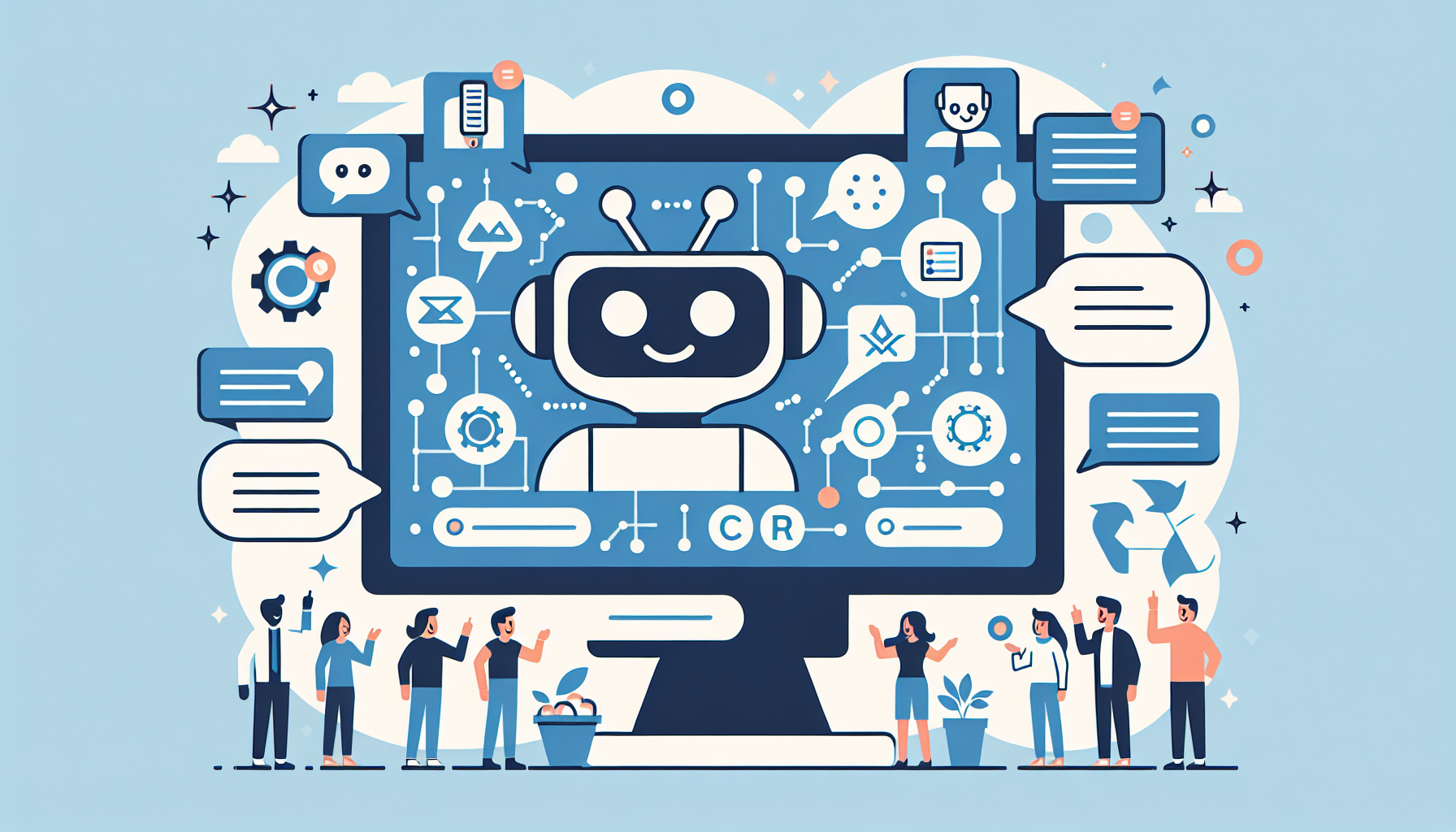Understanding CRM and the Role of ChatGPT
Customer Relationship Management (CRM) systems are essential tools for businesses seeking to maintain and enhance relationships with customers. They facilitate the storage, analysis, and management of customer information, thereby improving customer satisfaction, retention, and sales. In this digital age, integrating advanced technologies like ChatGPT can transform a CRM system into a robust solution that enhances user experience and operational efficiency.
Benefits of Integrating ChatGPT with Your CRM
-
Enhanced Customer Support: ChatGPT can handle customer inquiries in real-time, providing instant responses to common questions. This not only reduces wait times but also frees up human agents to handle more complex queries.
-
Personalized Interactions: Leveraging predictive analytics and data from the CRM, ChatGPT can tailor conversations based on previous interactions, ensuring customers feel valued and understood.
-
24/7 Availability: By integrating ChatGPT into your CRM, businesses can offer round-the-clock support, catering to customers in different time zones and improving overall service level.
-
Improved Data Agility: ChatGPT can process and analyze large volumes of customer interactions, helping businesses derive insights on customer behavior, preferences, and needs.
-
Cost Efficiency: Automating customer interactions through ChatGPT reduces operational costs associated with traditional customer service approaches, allowing businesses to allocate resources more effectively.
Planning the Integration
Before jumping into integration, a strategic plan is essential. Consider the following steps:
Define Objectives
- Goals: Identify specific objectives for integrating ChatGPT. Is it to improve response times, increase customer satisfaction, or reduce operational costs? Clear objectives guide the implementation process.
Assess Current CRM Capabilities
- System Compatibility: Evaluate whether your existing CRM supports API integrations and can accommodate AI functionalities. Ensure it has the necessary infrastructure for a smooth transition.
Choosing the Right Technology
Selecting the appropriate version of ChatGPT is crucial. Consider these factors:
Scale of Operations
- Enterprise vs. Small Business: Determine if an extensive AI model or a smaller version will meet your needs. Larger businesses may require more sophisticated models to handle vast amounts of interactions.
Use Cases
- Chatbots vs. Virtual Assistants: Analyze whether your primary need is a chatbot for customer inquiries or a virtual assistant for more complex tasks.
Integration Process
-
API Integration
Most CRMs support integration through API. Familiarize yourself with both your CRM’s API documentation and that of ChatGPT to streamline the connection.
- Develop API Access: Obtain API keys from OpenAI for ChatGPT and your CRM. These keys enable authentication and data exchange.
-
Develop the ChatGPT Model
Customize the ChatGPT model to align with your business goals. This includes:
-
Training with Relevant Data: Feed the model data from past customer interactions to enhance context awareness.
-
Setting Parameters for Interactions: Fine-tune the ChatGPT model to determine the tone, style, and type of language that your customers resonate with.
-
-
Create User Flows
Designing user interaction flows is essential for a seamless experience. This involves mapping out potential customer queries and the corresponding responses from ChatGPT.
- Decision Trees: Implement decision trees to guide users through common problems, providing them with clear choices that lead to quick resolutions.
-
Testing Phase
Prior to rolling out the integrated system, conduct thorough testing to identify and rectify potential issues.
-
User Simulations: Simulate user interactions to evaluate the accuracy and relevance of responses generated by ChatGPT.
-
A/B Testing: Consider performing A/B tests to compare the performance of traditional support channels against the newly integrated ChatGPT.
-
Monitoring and Improvement
Performance Analysis
After deployment, continual monitoring is essential for ensuring success. Key performance indicators (KPIs) to track include:
-
Response Time: Measure how quickly ChatGPT responds compared to traditional support.
-
Customer Satisfaction Scores: Collect feedback to evaluate customer satisfaction post-interaction.
-
Resolution Rates: Track how often ChatGPT successfully resolves issues without human intervention.
Continuous Learning
ChatGPT benefits from a learning loop. Regularly update the model with new data and insights to enhance its accuracy and relevance.
- Feedback Loop: Encourage users to provide feedback on their interactions, using this data to improve response quality and customer experience.
Best Practices for Successful Integration
-
Clearly Define Parameters: Ensure that the use of ChatGPT is well-defined to avoid overstepping boundaries. Clearly set the context in which customers are interacting with AI versus human agents.
-
Human Backup: Always provide an easy option for users to connect with human support when the AI cannot solve their issue. This balances automation with personal service.
-
Train Your Team: Equip your customer service team with knowledge about how to work with ChatGPT, enabling them to manage escalated interactions effectively.
-
Transparency: Let customers know they are interacting with an AI system. This transparency builds trust and helps manage expectations.
-
Regular Updates: Consistently update your training data and improve the interaction framework based on customer feedback and evolving business needs.
Conclusion
Integrating ChatGPT into your CRM is a transformative solution that enhances customer engagement and operational efficiency. By following a structured approach, businesses can harness the power of AI to create a more responsive and personalized customer service experience. The future of CRM lies in intelligent automation, and ChatGPT is at the forefront of that evolution.


